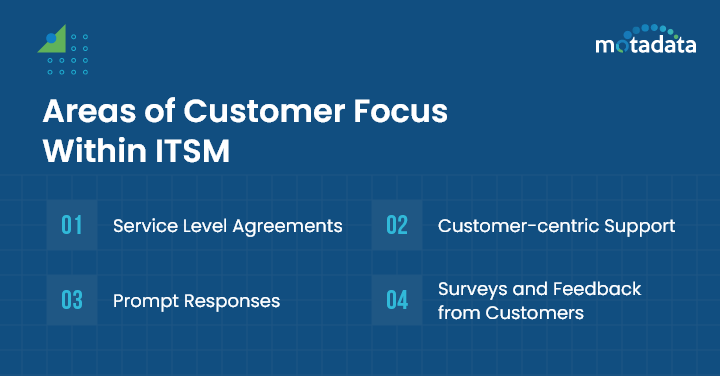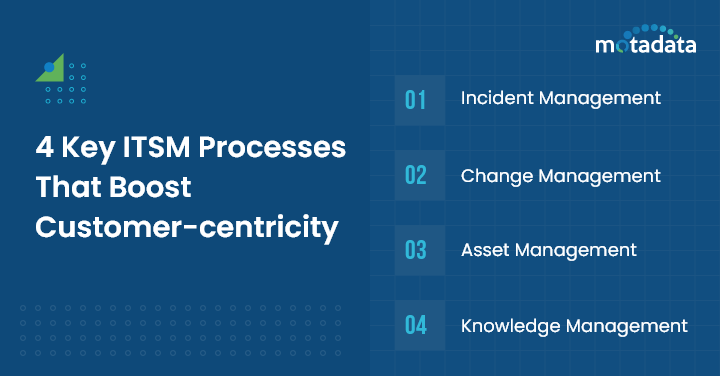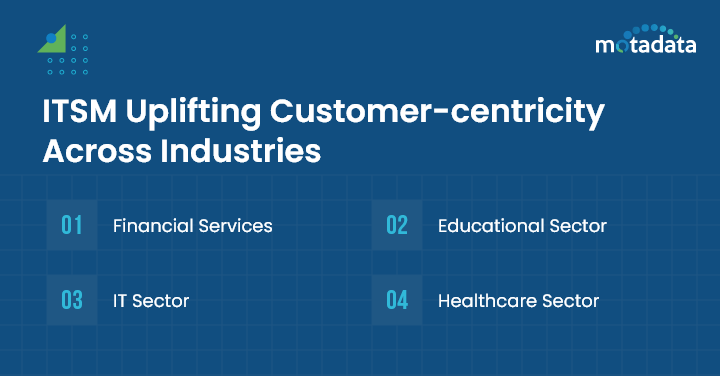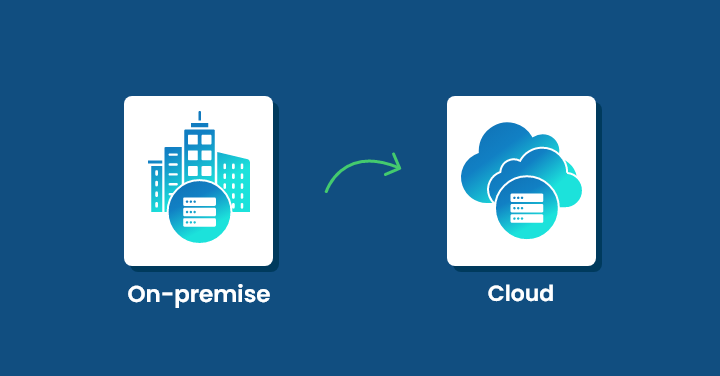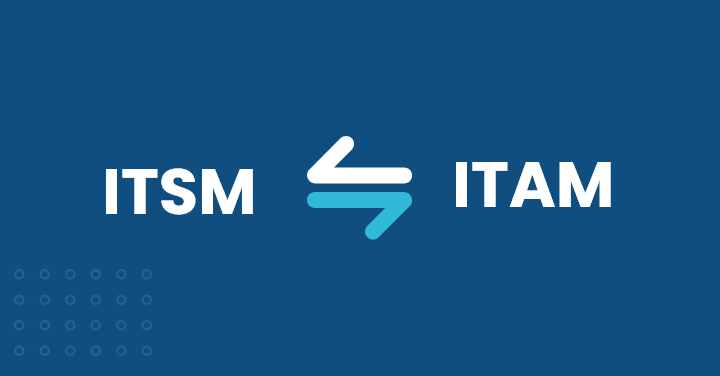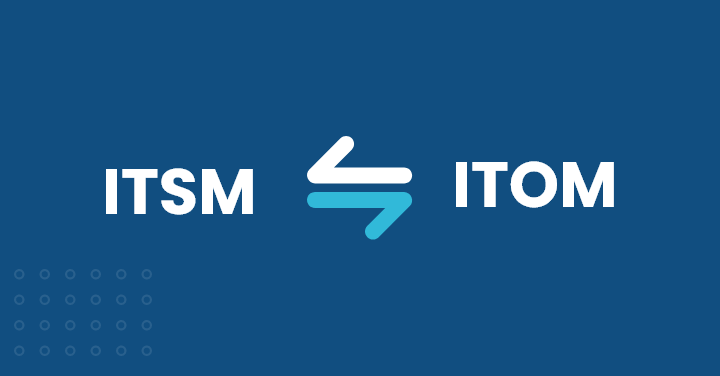Customers serve as the propulsion for any business endeavor.
When their satisfaction aligns with our services, the business flourishes. To sustain this synergy, what better instrument exists than an ITSM tool?
Probe further to grasp the essence of ITSM, its significance, and the multitude of benefits it yields in fostering a customer-centric approach.
What is IT Service Management (ITSM)?
Information Technology Service Management comprises a collection of methods, rules, and policies allowing organizations to design, deliver, oversee, and enhance the IT services they provide to their customers.
The ultimate goal of ITSM is to be customer-centric by ensuring synchronization between IT services and business needs, elevating efficiency, and adding worth to the organization and its customers.
Importance of ITSM in Today’s Digital Age
In today’s digital world, where customers want everything to happen at the tip of their fingers, the utilization of ITSM becomes indispensable to meet the sprouting demands.
The demands majorly relate to how to enhance the customer experience day-by-day.
This is where the ITSM tool comes into the picture. Irrespective of the organization’s size and domain, customer-centric ITSM helps to elevate service delivery in the following ways:
4 Ways ITSM Elevates Customer Service
1. Self-service Portals & Knowledge Bases
Portals are the first point of contact to get some info or resolve any issue. And customers mostly prefer to find solutions on their own instead of depending on the Support teams.
Hence, a self-service portal with an appealing interface that is easy to adapt helps to achieve this.
Also, ITSM, with its enriched collection of knowledgebase articles, plays a critical role in breaking the icebergs at the initial stage and creating satisfied and happy customers.
Implementing intuitive portals empowers customers to troubleshoot issues independently, fostering satisfaction by enabling swift resolution of common tasks like password resets or account unblocks.
2. Chatbots and Virtual Agents
The chatbots and virtual agents are like a boon for ITSM users.
They interact with the customers like humans and provide accurate solutions.
Still, if the issue persists, the customer can talk directly to the technician and resolve it promptly.
This minimizes the waiting time for users and enhances the customer experience.
3. Brand-centric Portals
ITSM allows customizing the portal as per one’s brand and requirement.
Customers can personalize everything from changing the look and feel of the ITSM application to configuring the workflows, scenarios, auto-assignment, and other settings
Areas of Customer Focus Within ITSM
The areas of customer focus within ITSM include:
1. Service Level Agreements
Formulating contracts that outline the expected service level for customers, including response times, resolution objectives, and quality metrics, and ensuring services sync with their requirements.
2. Customer-centric Support
Tailored IT services and solutions. Aligned goals. Measurable value. That’s what the ITSM tool is focused on delivering to the customers.
3. Prompt Responses
All customers need prompt responses to their queries, and the ITSM tool helps accomplish that.
With the help of features like self-service portals, knowledge base, chatbots, etc., users can receive responses without any delay.
4. Surveys and Feedback from Customers
Feedback and survey apps help to understand the bottlenecks, fulfillment levels, and areas of improvement.
This data helps segregate the services to match the end-user requirements better.
Collaboration Between ITSM and Customer-centricity
ITSM and Customer-centricity are intertwined concepts. IT Service Management refers to the processes involved in customer service delivery.
At the same time, customer experience surrounds every customer who communicates with the businesses.
A well-administered IT infrastructure can increase customer contentment, while an improper one can cause blunders, customer dissatisfaction, and business loss.
Hence, ITSM is a powerful tool for taking customer experience to the next level.
-
Customer-centric Approach
The ITSM tool facilitates businesses to look at their services and deliverables from the customer’s perspective.
ITSM enables businesses to structure services based on customer needs, ensuring smooth communication channels.
-
Automation Features
ITSM’s automation capabilities enable businesses to continually enhance services without requiring manual involvement.
These capabilities facilitate user notifications for expiration periods, execution of repetitive tasks, identification of bottlenecks, and resolution through chatbots or knowledgebases, among other functions.
Such attributes assist businesses in prioritizing crucial tasks requiring human intervention over routine operations.
-
DIY Portals
Good ITSM applications offer a DIY portal as a key tool to address the usual problems.
These portals aid the solution-seekers by leveraging updated knowledge bases and online virtual support.
-
Reporting Features
Another way for an ITSM to be customer-centric is to track and monitor the performance of businesses using its reporting feature.
The statistics reflect the quality of customer experience and depict the areas of augmentation.
The numbers can also help identify the technical issues creating unhappy customers.
4 Key ITSM Processes That Boost Customer-centricity
The key processes that boost customer-centricity include:
1. Incident Management
No one likes interruptions in their services; Incident Management takes care of that efficiently.
It leads to inducing customer satisfaction within an organization’s IT service framework.
Here’s how Incident Management impacts customer satisfaction.
- Ensures Prompt Response and Resolution
- Reduced Downtime
- Transparent Communication with the Customers
- Complying with Service Level Agreements (SLA)
2. Change Management
Change management involves utilizing standardized methods to handle alterations in IT infrastructure.
It encompasses planning and structured workflows to mitigate adverse effects during and after the change implementation.
Here’s how change management impacts customer experience:
- Facilitates effective and timely responses to requests
- Ensures change implementation with minimum disruption
- Correlates with the Customer’s Needs
- Heightened Service Reliability
Also Read: Understanding Change Management and Its Importance Within Your Organization
3. Asset Management
The customer is at the center of every business, and to lead the market, a transformation is required from being value-oriented to customer-oriented.
It’s not just that the customer looks only for value but also for the smooth process that makes the purchase and its service satisfactory.
Here’s how asset management System boosts customer-centricity:
- Elevates the optimum utilization of assets
- Facilitates service or product customization
- Improves functional efficiency
- Increases the asset’s long-term value
4. Knowledge Management
The availability of updated and accurate knowledge repositories makes the lives of customers and support representatives easy to a great extent.
They play a significant role in intensifying customer involvement considerably.
Here’s how knowledge management strengthens customer-centered strategies:
- Knowledge management aids in solving common issues independently
- Creates better information flow throughout the organization
- Makes solution searchable
- Lends support from anywhere and everywhere
- Provides faster responses to customers
ITSM Uplifting Customer-centricity Across Industries
ITSM is a set of practices focusing on customer-centricity and aligning IT services with business requirements.
In various sectors, ITSM revolutionizes the customer-centric approach:
-
ITSM in Financial Services
In the financial sector, the customer-based approach understands the clients’ financial requirements and accordingly offers tailored solutions, taking care of their privacy.
The solutions include creating accounts, FDs, changing account details requests, etc. Using ITSM, these service requests can be fulfilled promptly, thereby increasing the number of loyal clients.
-
ITSM in the Educational Sector
ITSM serves as a platform between the students and the university/institution.
Here, the students can place their requirements and receive prompt responses from the staff.
Additionally, the staff can post announcements on the portal regarding admissions, notices, etc.
This ensures seamless student-staff communication and reduces the wait time for all.
Moreover, the institution can manage its assets efficiently using ITSM.
The reporting feature helps to create reports and track details like student-wise results, assets in use, fees, etc.
-
ITSM in the IT Sector
ITSM substantially enhances customer-centricity in the IT sector by prioritizing the delivery of custom-made IT services to meet customers’ needs and preferences.
ITSM contributes to this improvement by analyzing customer needs, designing services based on inputs, efficiently resolving incidents, improving nonstop based on feedback, adapting to a proactive and client-oriented approach, etc.
This helps create and grow a positive experience among the clients.
-
ITSM in the Healthcare Sector
ITSM in the healthcare industry promotes a more patient-centric approach by improving patient care services, offering first-class service delivery, maintaining patient data security, and optimizing healthcare and administrative operations.
Here, ITSM is designed to focus on the needs of the patients.
Business Benefit of Customer-centric ITSM
The main goal of every organization is to make business; this happens only when a customer-centric ITSM approach is adopted. With this approach, the organizations gain the following benefits:
- Swift Problem Resolution
- Provide a positive customer experience
- Efficient utilization of resources
- Reduced cost and increased ROI
Measuring ITSM Success in Customer-centricity
Measuring the success of ITSM in customer-centricity involves assessing the key performance indicators and metrics that align ITSM practices with customer needs.
Here are some of the ways to measure the success of ITSM in customer-centricity:
- Monitor the customer feedback and ratings
- Check the compliance of Service Level Agreement performance
- Track the time of the first responses received
- Track the number of loyal customers retained
- Observe the trends in Service Requests
By now, the significance of ITSM in shaping your organization’s customer-centric approach, surpassing mere value-centricity, should be evident.
For deeper insights, our Motadata team stands ready to guide you towards securing the ideal customer-centric ITSM tool, propelling your business to new heights.
Feel free to contact us for further details, or schedule a demo.
FAQs:
A customer-centric organization focuses on fulfilling the customers’ needs in terms of value and experience. It revolves around analyzing, antedating, and meeting the customer expectations at every stage of the business.
ITSM provides the following benefits for being customer-centric:
- Faster resolution to customer problems
- Provide a positive customer experience
- Efficient utilization of resources
- Reduce cost and increase ROI
The benefits of adopting ITSM for customer-centric organizations are:
- Streamlined business processes
- Enhanced customer satisfaction
- Improved Service Quality
- Speedy Responses
ITSM enhances the service desk experience for customers by providing:
- Greater Incident and Service Request management
- Self-service options
- Updated Knowledgebase
- Effective ticket auto-assignment and workflows



